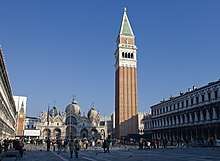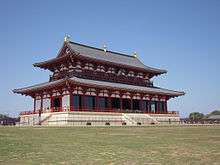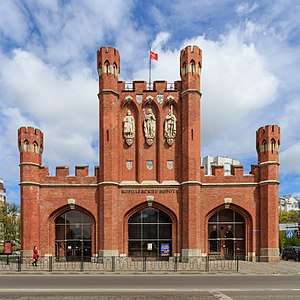Reconstruction (architecture)
Reconstruction is a term in architectural conservation whose precise meaning varies, depending on the context in which it is used.
More broadly, such as under the ICOMOS Burra Charter, "reconstruction" means returning a damaged building to a known earlier state by the introduction of new materials.[1] It is related to the architectural concepts of restoration (repairing existing building fabric) and preservation (the prevention of further decay), wherein the most extensive form of reconstruction is creating a replica of a destroyed building.
More narrowly, such as under the Secretary of Interior's Standards in the United States, "reconstruction" is "the act or process of depicting, by means of new construction, the form, features, and detailing of a non-surviving site, landscape, building, structure, or object for the purpose of replicating its appearance at a specific period of time and in its historic location."[2]
Reconstruction of buildings and structures
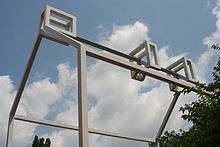
There may be several reasons for the construction of a building or creation of a replica building or structure.
Sometimes, it is the result of destruction of landmark monuments that is experienced as traumatic by inhabitants of the region, such as through war, planning errors and politically motivated destruction, other times, merely the result of natural disaster. Examples include Yongdingmen (former Peking city gate temporarily sacrificed to traffic considerations), St Mark's Campanile in Venice (collapsed in 1902), House of the Blackheads (Riga), Iberian Gate and Chapel and the Cathedral of Christ the Saviour in Moscow (destroyed by order of Joseph Stalin), Dresden Frauenkirche and Semperoper in Dresden (bombed at the end of World War II). A specifically well-known example is the rebuilding of the historic city center of Warsaw after 1945. The Old Town and the Royal Castle had been badly damaged already at the outset of World War II. It was systematically razed to the ground by German troops after the Warsaw Uprising of 1944. The reconstruction of Warsaw's historic center (e.g., St. John's Cathedral, St. Kazimierz Church, Ujazdów Castle) and, e.g., the replica of the Stari Most built in Mostar (Bosnia Herzegovina) have met with official approval by UNESCO.
Other times, reconstructions are made in the case of sites where the historic and cultural significance was not recognized until long after its destruction, common in North America, especially with respect to its early history. Examples include the reconstruction of Colonial Williamsburg in Virginia, the rebuilding of numerous structures in Independence National Historical Park in Philadelphia, and Fort William Historical Park in Ontario, Canada.
Critics of reconstructed and replica buildings see them as a falsification of history and as the creation of a kind of "architectural ersatz". Most guidelines for reconstruction (such as the Burra and Venice charters) suggest that new construction be distinguishable from the original, and that reconstruction not be carried out if insufficient information exists to accurately re-create the building's former state.
Examples
Australia
- St Kilda Pavilion (2006)
Belgium
- Ypres Cloth Hall (after 1918)
Canada
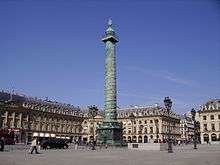
- Cathedral-Basilica of Notre-Dame de Québec (1923)
- Montreal Biosphère (1995)
- Ontario Legislative Building (1912)
- Saint-Joachim de Pointe-Claire Church (1885)
China
- Pavilion of Prince Teng (1989)
- Yellow Crane Tower (1981)
- Yongdingmen Gate, Beijing (2005)
Croatia
Czech Republic
- Bethlehem Chapel, Prague, Czech Republic (1953)
France
- Soissons Cathedral, Soissons (after 1918)
- Vendôme Column, Paris
Germany
.jpg)
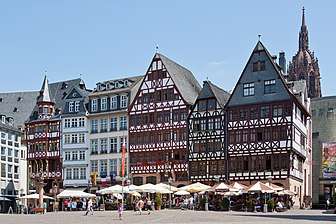
- Berlin City Palace
- Leibnizhaus, Hannover (1981)
- Falkenhaus, Würzburg
- Town Hall, Osnabrück
- St. Michael's Church, Hamburg
- Semperoper, Dresden
- Schloss Johannisburg, Aschaffenburg
- Roman limes
- Heilig-Geist-Spital, Nuremberg
- Hildesheim Cathedral
- Buddenbrookhaus, Lübeck
- Bauakademie, Berlin
- City Palace, Potsdam
- Münster Cathedral
- Butchers' Guild Hall, Hildesheim (1989)
- Old Castle (Stuttgart)
- Dresden Castle
- Dresden Cathedral
- Dresden Frauenkirche
- Munich Residence
- Munich Frauenkirche
- Dom-Römer Project, Frankfurt am Main
- Saarbrücken, Ludwigskirche
India
- Daksheswara Mahadev Temple (1963)
- Tabo Monastery (1983)
Iraq
- Babylon (1983)
Israel
- Hurva Synagogue, Jerusalem (2010)
Italy
- Abbey of Monte Cassino (1964)
- Opera house La Fenice, Venice (2003)
- St Mark's Campanile, Venice (1912)
- Basilica of Saint Paul Outside the Walls, Rome (1840)
Latvia
- House of the Blackheads, Riga, Latvia
Lithuania
Malta

- Chapel of St. Anthony in Fort Manoel (2009)[4]
- Chapel of St. Roche on St. Michael's Counterguard (2014)[5]
- Wignacourt Arch (2015)[6]
Plans are also being made for reconstructing the Birgu Clock Tower, which was destroyed in 1942.[7]
Poland
- Sigismund's Column, Warsaw
- St. Kazimierz Church, Warsaw (1947-1953)
- Green Gate, Gdańsk, Poland
- Warsaw Barbican (1952–1954)
- St. Alexander's Church, Warsaw (1949-1952)
- Holy Cross Church, Warsaw (1953)
- Church of the Holy Spirit in Warsaw (1956)
- Malbork Castle (1960-1993)
- Royal Castle, Warsaw (1971-1974)
- St. Hyacinth's Church, Warsaw
- St. John's Archcathedral (Warsaw)
- St. Florian's Cathedral, Warsaw (1972)
Russia
- Königsberg Cathedral
- King's Gate (Kaliningrad)
- Kazan Cathedral, Moscow (1993)
- Cathedral of Christ the Saviour, Moscow (2000)
Slovakia
Serbia
Ukraine
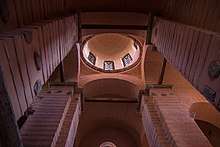
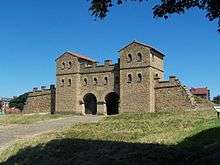
- Golden Gate, Kiev (1982)
- St. Michael's Golden-Domed Monastery, Kiev (1999)
United Kingdom
- Arbeia Roman Fort, South Shields, England
- Butser Ancient Farm, England
- Globe Theatre, London
- Lunt Roman Fort, England
United States
- Blennerhassett Mansion
- Colonial Williamsburg (mostly since 1920s)
- Governor's Palace (Williamsburg, Virginia) (1931-34)
- Nauvoo Temple (2002)
- Palace of Fine Arts, San Francisco (1965)
- White House Reconstruction (1949-52)
See also
- Historic preservation
- Building restoration
- Anastylosis, the reconstruction of a ruined building using the original elements to the greatest degree possible
- New Classical Architecture, a movement in architecture that continues the practice of classical architecture to go along with reconstructions
- Ise Grand Shrine in Japan, (which is ceremonially rebuilt every 20 years)
- Ship replica
References
- ICOMOS Burra Charter
- Preservation Service of the United States National Park Service "Secretary of Interior's Standards for Reconstruction" Check
|url=value (help). Retrieved April 2011. Check date values in:|accessdate=(help) - Macchio, Melanie (12 May 2010). "Venturi, Scott Brown's Franklin Court Threatened". Cultural Landscape Foundation. Retrieved April 2011. Check date values in:
|accessdate=(help) - "Reconstruction Of St Anthony's Chapel at Fort Manoel complete". The Malta Independent. 20 October 2009. Retrieved 1 December 2015.
- "Counterguard Chapel Reconstructed". MilitaryArchitecture.com. 20 November 2014. Retrieved 1 December 2015.
- "Wignacourt Arch, known as Fleur-de-Lys Gate, rebuilt". TVM. 25 November 2015. Retrieved 1 December 2015.
- "Vittoriosa Clock tower to be rebuilt to its former glory". The Malta Independent. 25 June 2007. Archived from the original on 22 December 2015.
External links
![]()
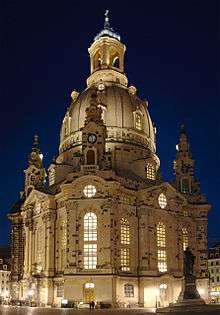
.jpg)

.jpeg)
